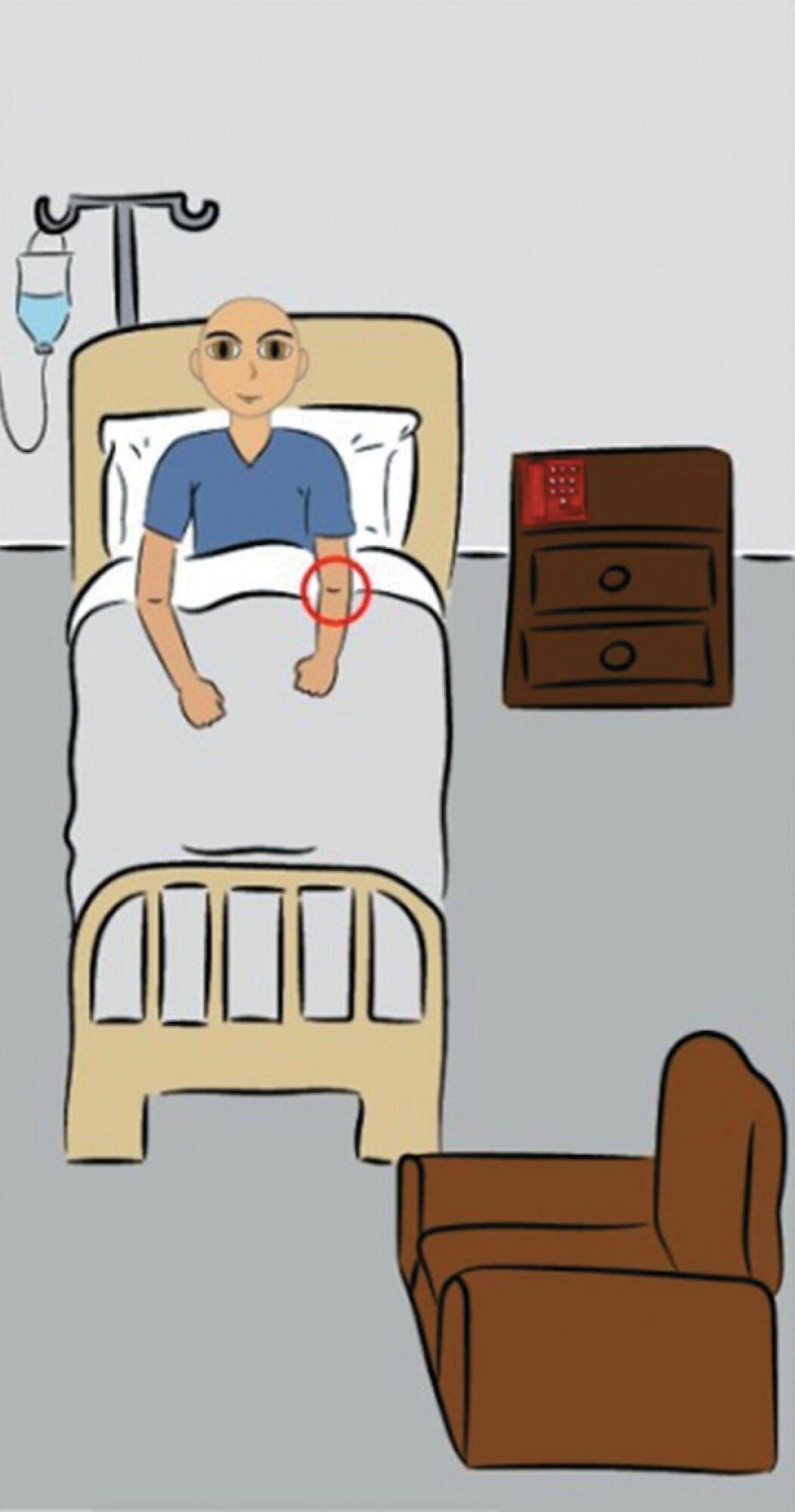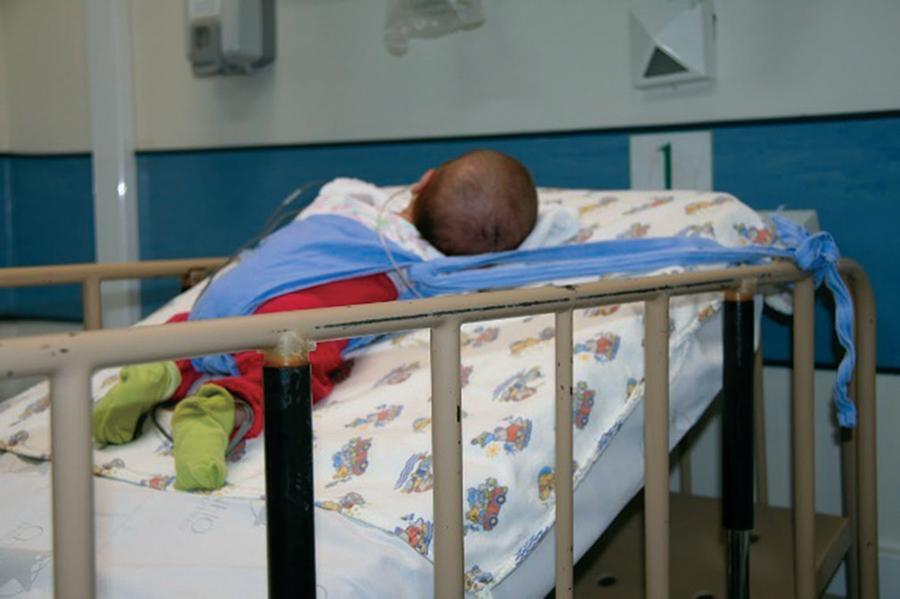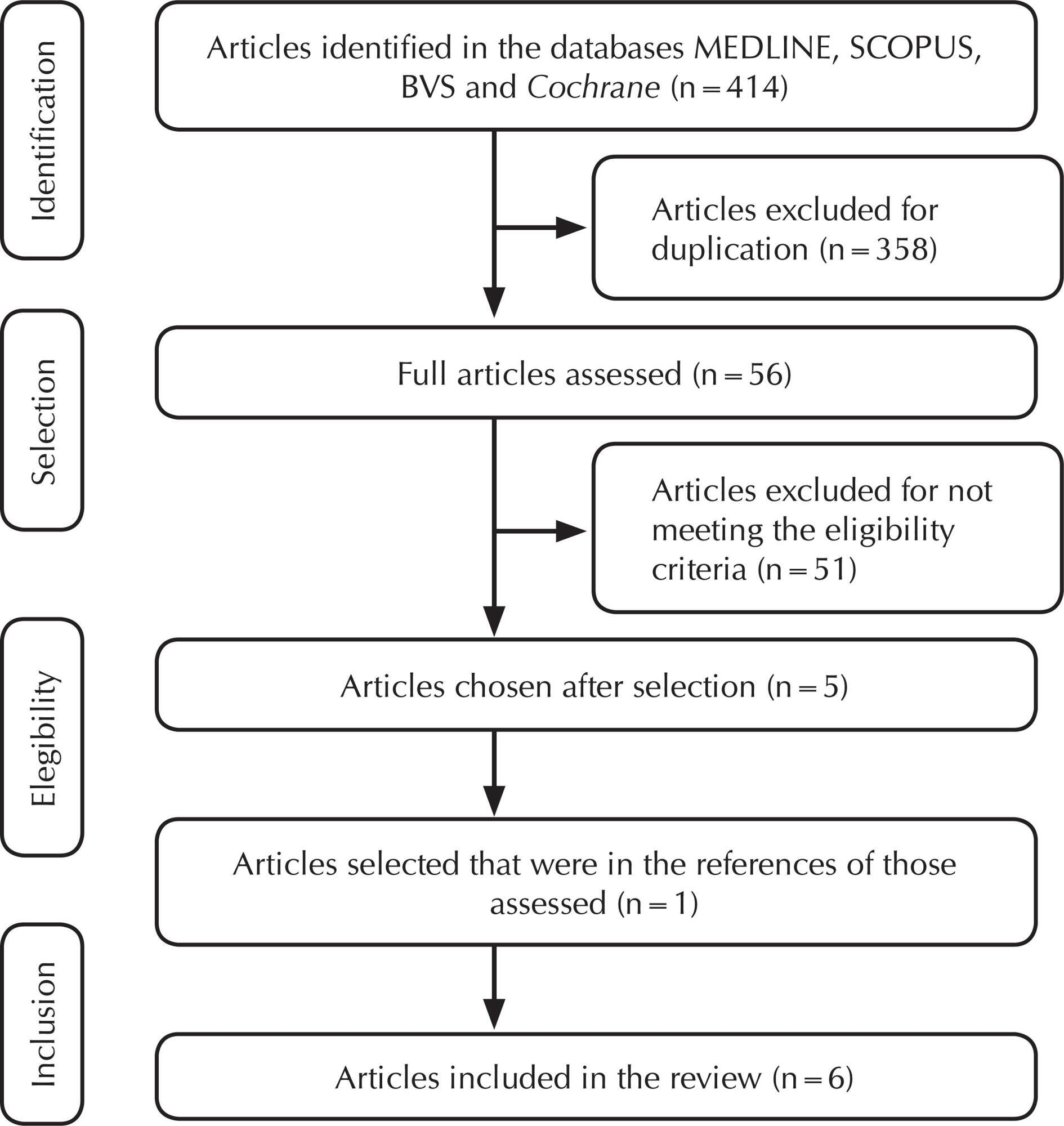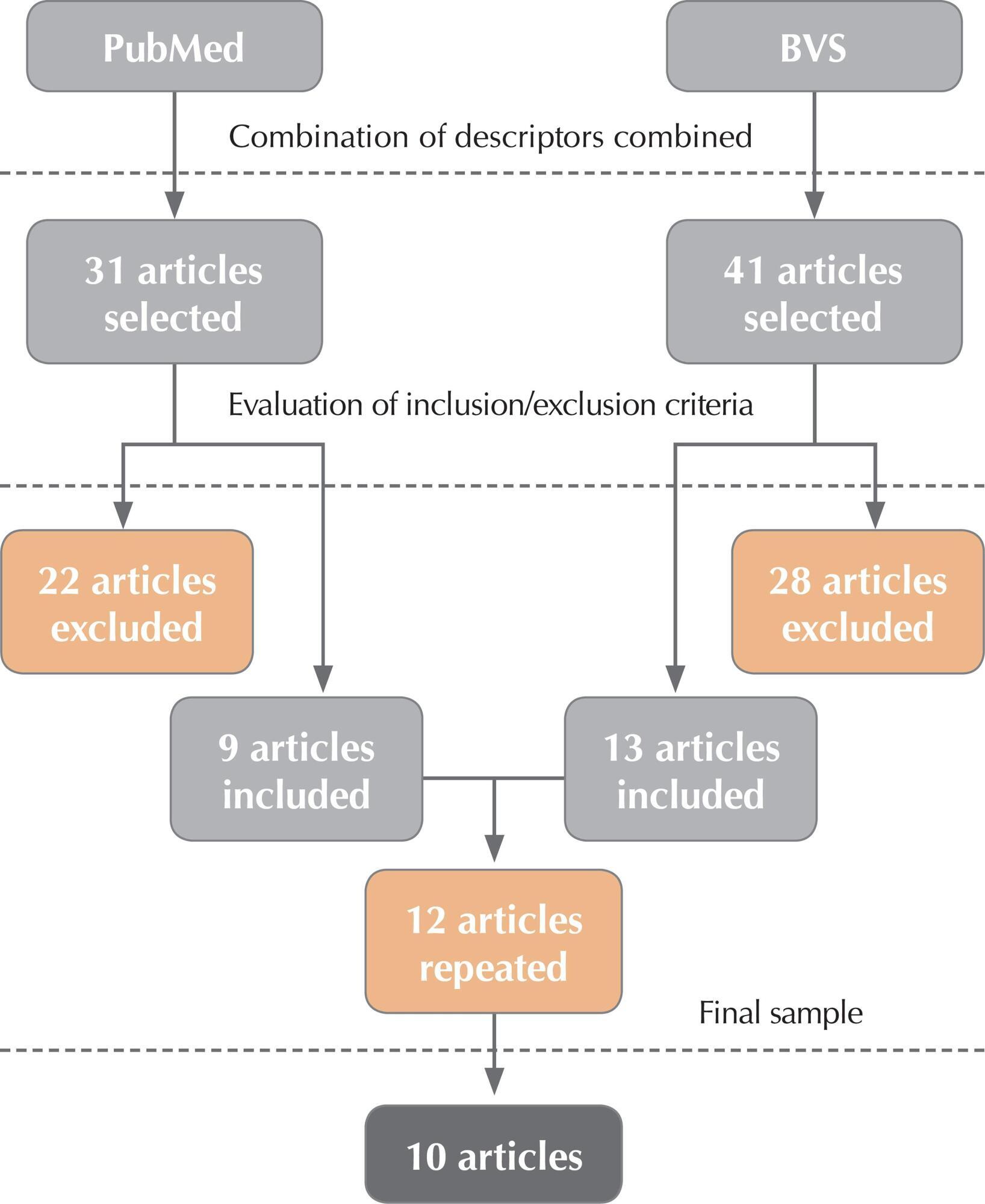-
01-01-2018
The quality of education in times of new National Curriculum Parameters
Revista Brasileira de Enfermagem. 2018;71:1485-1486
Abstract
The quality of education in times of new National Curriculum Parameters
Revista Brasileira de Enfermagem. 2018;71:1485-1486
DOI 10.1590/0034-7167-201871sup401
Views0The semantic impossibility of delimiting accurately the term “quality” challenges us. When one thinks of quality, it is common to ask questions related to the processes themselves or to the results achieved with emphasis on the satisfaction of those who participated in such processes. Thus, “quality” refers to the skills to carry out successful processes […]See more -
01-01-2018
A qualidade da educação em tempos de novas Diretrizes Curriculares Nacionais
Revista Brasileira de Enfermagem. 2018;71:1485-1486
Abstract
A qualidade da educação em tempos de novas Diretrizes Curriculares Nacionais
Revista Brasileira de Enfermagem. 2018;71:1485-1486
DOI 10.1590/0034-7167-201871sup401
Views0A impossibilidade semântica de se delimitar e demarcar com precisão o termo “qualidade” nos desafia. Quando se pensa em qualidade, é comum surgir indagações ligadas aos processos em si ou aos resultados alcançados com ênfase à satisfação de quem participou de tais processos. Assim, “qualidade” remete a competências para realizar processos com êxito e gerar […]See more -
EXPERIENCE REPORT01-01-2018
Caring for the future: decrease in infant mortality in Maranhão State
Revista Brasileira de Enfermagem. 2018;71:1479-1484
Abstract
EXPERIENCE REPORTCaring for the future: decrease in infant mortality in Maranhão State
Revista Brasileira de Enfermagem. 2018;71:1479-1484
DOI 10.1590/0034-7167-2017-0245
Views0See moreABSTRACT
Objective:
To report on the experience and care provided by the “Caring for the future” program to decrease infant mortality in 17 municipalities of Maranhão, in a proposal work of the Secretariat of Basic Care, in partnership with the Non-Governmental Organization called Centro Popular de Cultura e Desenvolvimento (Popular Center for Culture and Development/PCCD) from 2009 to 2015.
Method:
Experience Report of community care that made it possible to create and strengthen solidary relationships among community members.
Results:
The program decreased infant mortality rate and created in the supported communities a platform of health support, uniting information and care in Primary Care. The program trained 34 “Guardian Angels” and 170 “Supportive Caregivers”, mapped seven thousand “luminous spots” and trained more than 7,000 caregivers in health. It served 17 municipalities, 27,191 pregnant women, 291,266 families.
Final considerations:
The program was a catalyst for actions: it unveiled hidden resources in the community, awakened collective responsibility, offered training and built solidary relationships.
-
EXPERIENCE REPORT01-01-2018
Application program to prepare child/family for venipuncture: experience report
Revista Brasileira de Enfermagem. 2018;71:1474-1478
Abstract
EXPERIENCE REPORTApplication program to prepare child/family for venipuncture: experience report
Revista Brasileira de Enfermagem. 2018;71:1474-1478
DOI 10.1590/0034-7167-2017-0386
Views0See moreABSTRACT
Objective:
To report the experience of development of an application program to prepare child and family for venipuncture.
Method:
Experience report on an application program developed in the professional nursing master’s degree program in partnership with engineering undergraduate students.
Results:
The application program allows the child to understand the venipuncture procedure in a ludic and interactive manner. Its development occurred in three stages: identification of client’s needs, definition of components, and prototype elaboration.
Final considerations:
The application program, besides being directed to care and education of children and families, is able to meet the nurses’ needs to prepare them for venipuncture. Moreover, it is worth mentioning the importance of multidisciplinary approach for the concretion of similar projects.

-
EXPERIENCE REPORT01-01-2018
Applicability of Orem: training of caregiver of infant with Robin Sequence
Revista Brasileira de Enfermagem. 2018;71:1469-1473
Abstract
EXPERIENCE REPORTApplicability of Orem: training of caregiver of infant with Robin Sequence
Revista Brasileira de Enfermagem. 2018;71:1469-1473
DOI 10.1590/0034-7167-2016-0562
Views0See moreABSTRACT
Objective:
to report the nurses’ experience in relation to the training of caregivers of infants with Isolated Robin Sequence (IRS) for maintaining care after hospital discharge from the perspective of Self-Care Theoretical Framework.
Method:
the following categories were considered in this experience report: self-care action, self-care capacity, therapeutic self-care demand, self-care deficit, and nursing system. The nursing system was wholly compensatory and supportive-educative.
Results:
caregivers’ training by nurses results in the acquisition of technical skills and specific knowledge related to the infant’s positioning in elevated ventral decubitus, nasopharyngeal intubation, feeding-facilitating techniques and care with the feeding tube.
Final considerations:
the continuity of home care is guaranteed from caregivers’ training for the therapeutic demand.

-
REVIEW01-01-2018
The effectiveness of post-partum interventions to prevent urinary incontinence: a systematic review
Revista Brasileira de Enfermagem. 2018;71:1460-1468
Abstract
REVIEWThe effectiveness of post-partum interventions to prevent urinary incontinence: a systematic review
Revista Brasileira de Enfermagem. 2018;71:1460-1468
DOI 10.1590/0034-7167-2017-0338
Views0See moreABSTRACT
Objective:
to assess the effectiveness of post-partum interventions to prevent urinary incontinence: a systematic review.
Method:
systematic review of randomized controlled studies conducted in the MEDLINE, Cochrane, Scopus and the Virtual Library on Health (Biblioteca Virtual em Saúde, BVS) databases.
Results:
six articles were included in this review. All studies used the Pelvic Floor Muscle Training as the main procedure to prevent urinary incontinence. The results pointed to a positive and effective intervention in the post-partum period.
Conclusion:
there is evidence that programs of exercise of the pelvic floor musculature performed both in the immediate and late post-partum result in a significant increase in muscle strength and contribute to prevent urinary incontinence.

-
REVIEW01-01-2018
Effects of different hormonal contraceptives in women’s blood pressure values
Revista Brasileira de Enfermagem. 2018;71:1453-1459
Abstract
REVIEWEffects of different hormonal contraceptives in women’s blood pressure values
Revista Brasileira de Enfermagem. 2018;71:1453-1459
DOI 10.1590/0034-7167-2017-0317
Views0See moreABSTRACT
Objective:
To identify evidence in the literature of the relationship between the use of different hormonal contraceptive methods and alterations in women’s blood pressure values.
Method:
This is an integrative literature review, consisting of ten scientific articles published in PubMed and BVS, between 2012 and 2016, selected by keywords, available fully and free of charge, in English, Portuguese, or Spanish.
Results:
The articles showed that exogenous estrogen helps in the activation of the renin-angiotensin-aldosterone system causing hypertensive effects even in small doses; and that combined use with drospirenone reduces these effects. Routes of administration without passage through the liver and use of isolated progestin showed promising results in reducing the effects on blood pressure.
Conclusion:
There is evidence in the literature of pressure alterations associated with different hormonal contraceptives and that personal history of morbidities are to be considered in an attempt to reduce the effects on the cardiovascular system.

-
RESEARCH01-01-2018
Accuracy of the defining characteristics of the nursing diagnosis for fatigue in women under radiotherapy
Revista Brasileira de Enfermagem. 2018;71:1445-1452
Abstract
RESEARCHAccuracy of the defining characteristics of the nursing diagnosis for fatigue in women under radiotherapy
Revista Brasileira de Enfermagem. 2018;71:1445-1452
DOI 10.1590/0034-7167-2017-0549
Views0See moreABSTRACT
Objective:
To evaluate the accuracy of the defining characteristics of the nursing diagnosis for “fatigue in women with breast cancer under radiotherapy”.
Method:
Study of diagnostic accuracy, with cross-sectional design, performed in 130 women with breast cancer under radiation treatment. A data collection instrument was used to evaluate clinical socio-demographics and to investigate the presence or absence of defining characteristics for fatigue. The latent class analysis model was applied to assess accuracy measurements of the characteristics identified.
Results:
Fatigue diagnosis was present in 21.9% of the women. The characteristic which showed the highest sensitivity was “Impaired capacity in maintaining the usual level of physical activity”, while “Impaired capacity in maintaining usual routines” and “Lack of interest about the surrounding environment” presented greater specificity.
Conclusion:
Accurate diagnostics allow devising an action plan directed to the patients’ real needs.
Search
Search in:
Nuvem de Tags
Enfermagem (930)Cuidados de Enfermagem (269)Atenção Primária à Saúde (239)Idoso (208)Educação em Enfermagem (151)Segurança do Paciente (150)Saúde Mental (145)Educação em Saúde (139)Estudos de Validação (131)Qualidade de Vida (104)Tecnologia Educacional (100)Promoção da Saúde (99)COVID-19 (91)Criança (91)Família (87)Enfermagem Pediátrica (86)Saúde do Trabalhador (86)Adolescente (85)Saúde Pública (82)Estudantes de Enfermagem (77)







